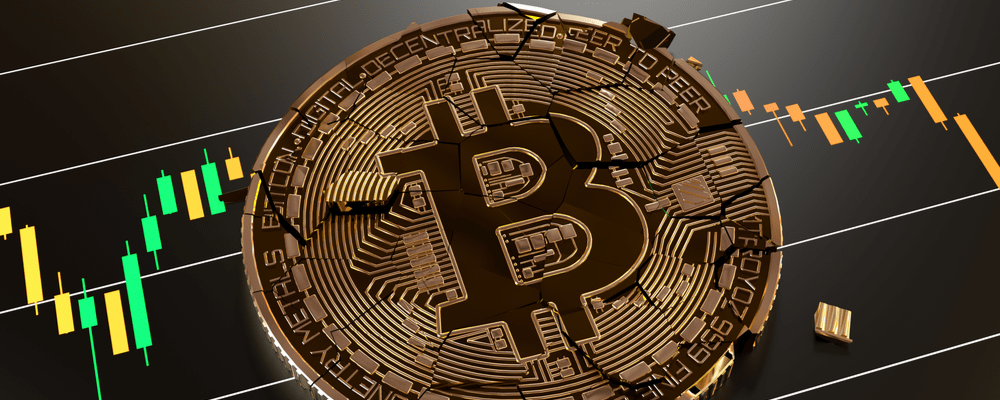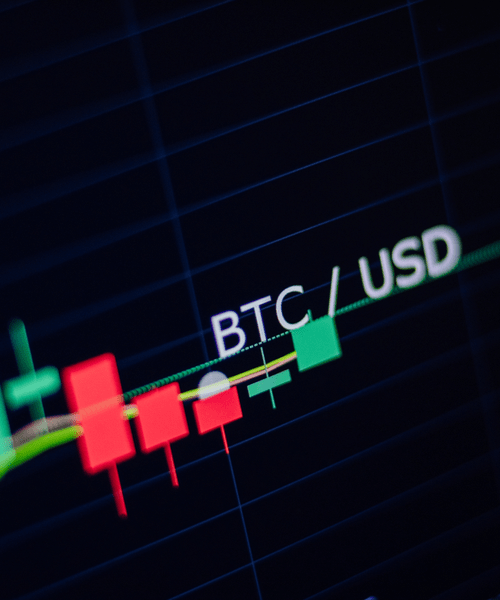CFD op Bitcoins
Bitcoin is also very well-known in the Netherlands. Bitcoin works as a payment system, whereby a transaction can take place automatically by means of technology, the blockchain. The number of people in the Netherlands who invest in Bitcoin is increasing. You can choose to purchase the Bitcoin itself, but you can also choose to purchase the underlying value of the Bitcoin and therefore not physically have the Bitcoin at home. You do the latter by means of a Bitcoin CFD.
A Bitcoin CFD is a contract in which you invest in the underlying value of the Bitcoin and not in the Bitcoin itself. In this case, you predict what the future price of the Bitcoin will be. With the Bitcoin CFD, you focus on the price fluctuations. Are you curious about this Bitcoin CFD? In this article, we will discuss what this exactly entails, what its advantages are and what you should pay attention to.
What is a CFD?
With a Bitcoin CFD you enter into a contract, where you do not have to have the Bitcoin in your home. That is why this is also called a financial contract. CFD stands for ‘Contract For Difference’ and literally means that you enter into a contract in which you can receive the difference between your invested and the actual value as profit or loss. The profit or loss is calculated by comparing the value when taking the CFD with the value at the moment you end the CFD.
This is therefore a big risk that you take, because price fluctuations can occur unexpectedly. It is advisable to be able to estimate the future price to a certain extent. Have you predicted this correctly? Then you can achieve a large return in a relatively short period. In addition to Bitcoin, you can also speculate on other crypto coins , such as Ethereum and Litecoin.

The Benefits of Trading a Bitcoin CFD
The biggest advantage of investing in a Bitcoin CFD is that you can make a profit quickly. In fact, you can not only make a profit if the price of Bitcoin rises, you can even make a profit if the price of Bitcoin falls . This depends on the strategy you choose. Do you expect the price to fall? Then it is interesting to take a CFD short now ( going short ), because there may be a fall in the future. Do you expect the price to rise? Then it may be interesting to buy the CFD long , because the price is now lower than you expect in the future (going long).
Unfortunately, every advantage has its disadvantage, the fact that you can make a profit quickly, also means that you can make a loss quickly. It is therefore risky if you want to invest in the Bitcoin CFD. Investing in Bitcoin CFDs is very often used by day traders, because the prices can rise and fall a lot every day. So you will not quickly see people who buy their Bitcoins CFD, and then keep this CFD for 15 years.
How exactly does Bitcoin CFD trading work?
How should you invest in a Bitcoin CFD? You can choose to invest in a Bitcoin CFD via brokers or online currency exchanges . When buying this contract for difference, you pay close attention to the value of the Bitcoin at this moment . You get the difference between the value at the moment you take your order (the moment you place your order) and the value at the moment you close the order.
So follow the world around you well. Do you expect something to happen that will cause the Bitcoin price to drop? Then of course you take this into account when you close the Bitcoin CFD. Of course you can not only close a CFD for Bitcoins, you can close these CFDs on many more products. Think for example of raw materials and shares, but also on bonds.
The leverage
When investing in a Bitcoin CFD, you do not enter into an agreement with the Bitcoin itself, but with the broker. The advantage of this is that you can take a large position with a small amount. This is because you can have more positions than you can actually pay . You do not have to pay the full costs when taking a position. This is due to the leverage effect . When you buy a Bitcoin yourself, you must of course first pay all costs before you receive the Bitcoin.
Because you can take more positions than you can actually pay, you can also make a big profit with these large positions. Unfortunately, this also means that you can quickly make a loss. And you have to pay for all the loss, so keep in mind that you must have the capacity to absorb the possible loss. There are also many risk management techniques .
The Bitcoin is actually just like the Euro
Although Bitcoin may be less well-known than the Euro, Bitcoin works in exactly the same way. Bitcoin also determines a currency value. Just as you can trade other currencies with the Euro, you can also do this with Bitcoin. This is recorded in a currency quote: the values of the currencies are compared to the values of other currencies. You receive a profit when your currency becomes more valuable compared to other currencies.
So imagine 1 Bitcoin was previously equal to €16,000, but is now equal to €15,000, then your Bitcoin has increased in value. You can trade Bitcoin against almost all known currencies, such as the Euro or the US Dollar. In recent times, Bitcoin has been traded most with the US Dollar (USD) .

Bitcoin CFD trading strategy
Investing in Bitcoin CFDs is also called Bitcoin CFD trading. With Bitcoin CFD trading you trade in much the same way as you would with other CFDs with a high trading volume. This allows you to apply the different strategies well. A ‘high trading volume’ means that the price can rise or fall very much within a short period of time. When determining your strategy, you take into account the price and market movements that you expect in a certain period of time. These are often short-term strategies. Read more about day trade strategies .
You can also choose to use long-term strategies, such as swing strategies. Here you pay attention to trend movements : the average movements that a price has shown over a longer period of time. This is also called the ‘trend following’ strategy because you pay attention to the trend, the average. It is important that you take into account your profile, your preferences, but also your profit goals and your available capital when determining your strategy. Of course, you always keep an eye on the market, regardless of which strategy you want to choose.
What is the best Bitcoin strategy?
But what is the best Bitcoin Strategy? And does ‘the best’ even exist? Unfortunately, there is no golden formula that will give you the very best strategy and guarantee you a profit. However, there are a number of points that you can pay attention to in order to choose a good strategy for yourself: ensure good techniques that allow you to measure the trend well . You can also create a trading schedule for yourself . In this you state when you want to trade actively and what your trading options are. Experienced traders agree that it is wise to pay close attention to the Bitcoin USD trend , because this best reflects the trading opportunities and, according to them, is the most representative.
Bitcoin CFD experiences
Of course, investing is always risky. No matter how good you are at predicting future expectations, unexpected things can always happen that can cause the price to drop in one go. This makes experiences with Bitcoin CFD both very positive and negative.
Given the riskier nature of the instrument, the chance of loss can also be greater, but on the other hand, there is a possible high return. To ensure that you do not suffer large losses, it is advisable to set good rules for yourself regarding risk management . After all, you do not have a physical product and only speculate on the price movement. Read more about the risks of CFDs .
Keep a close eye on your trading opportunities so that you can take full advantage of them. This will ensure that you make a profit and have a positive experience with Bitcoin CFDs.

Is Bitcoin CFD trading right for me?
Is Bitcoin CFD trading right for you? It depends. Bitcoin CFD trading may only be for people who want to trade . This is because Bitcoin CFD trading is very risky . When trading, you base your actions on future expectations and market movements. It can always happen that the future turns out differently than you expected, causing you to suffer a loss.
All brokers on our website that offer Bitcoin CFD trading are supervised . Compare CFD brokers now with our comparison tool .